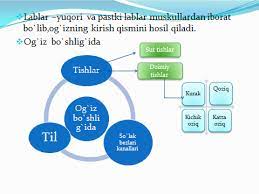SHARE WITH FRIENDS:
Active methods of teaching biology
PLAN:
-
Interactive methods of teaching.
-
Problematic research methods. .
-
Logical methods of teaching
-
Independent working methods.
-
Methods of motivating and justifying students' activity in teaching.
-
Methods of control and self-control in teaching.
Interactive — It is derived from the English word interact, which means to act in cooperation.
By interactivity it is understood that the interaction of the student in cooperation with the student or the communication with the computer works.
Interactive teaching is, first of all, dialogic teaching, solving problems in cooperation by all participants in the process of communication.
The main essence of interactive teaching is that during the teaching process, all students become active participants in the cognitive process, they understand the discussed problems, the development of events and phenomena, understand problematic situations, search for ways to solve them, and recommend the most optimal option.
Therefore, in the teaching of biology, the reproductive methods of teaching are combined with oral presentation, demonstration and practical methods. from problem-based research and logical methods use is important. For this purpose, the teacher should have a proper understanding of the specific features of these methods, the methodical techniques included in them, and acquire the skills to use them effectively.
Problematic research methods It serves to actively master the educational material by applying the previously acquired knowledge and skills in new situations to problem situations created in a consistent and goal-oriented manner during the lesson. This group of methods prepares the ground for students' intellectual development, development of creative and independent thinking skills, analysis of problem situations and finding the most optimal way out of them, getting the goal right.
In the problem story method, the teacher creates problem situations in the process of learning a new topic, in cooperation with students, the story provides an opportunity to find answers to problematic questions, generate and prove educational hypotheses, and solve problems based on the answers of students.
From the problematic practical method when using it, problem tasks are created, experiments are conducted on this basis, educational hypotheses are formed for solving problem situations, and educational research experiments are conducted, and problems are solved by describing educational conclusions and generalizations.
In the following years, classes using problem-based methods were given a new name ("Storm of thought" by BRKadirov), ("Brain attack", "Clash of ideas", "Battle of ideas" VMKarimova, FAAkramova),
A group of logical methods of teaching, This method determines the direction of the content of the educational material, students' ability to distinguish the main idea, analyze the studied object, compare, generalize, acquire the methods of mental activity, develop abstract thinking, causal connection makes it possible to understand connections.
The group of logical methods of teaching includes inductive, deductive, analysis, separation of the main idea, comparison, and generalization methods..
In the inductive method, students' attention is first attracted to the study of specific facts, and then directed to draw general conclusions from the specific.
In the deductive method, students first learn general laws, and then are taught to draw conclusions from the general to the particular.
Using the analysis method, students understand information, identify the similarities and differences of the studied objects, divide the studied objects into components, determine the beginnings, causes and consequences between them,
The method of separating the main idea has become important, separating and sorting the main idea in the educational material, separating information into logically completed parts, separating the main idea and secondary ideas, separating key words and concepts, the main idea prepares the ground for drawing conclusions about.
Using the method of comparison, students learn to identify comparative objects given in educational tasks, to identify the main features of objects, to compare, to identify similarities and differences, to formalize the results of comparison with conditional symbols.
In the process of solving problems, the method of generalization prepares for identifying, comparing, preliminary conclusions, the dynamics of the development of the phenomenon, formalizing the results of generalization using conditional symbols, drawing a general conclusion. These methods are appropriate:
-
a) the inductive method is the problem statement of specific facts, directing students' activities to draw general conclusions from the specific, methods of giving problematic assignments;
-
b) the deductive method is the method of explaining general laws, directing students' activities to draw conclusions from general to specific;
-
v) methods of understanding information in the field of analysis, identifying the similarities and differences of the studied objects, dividing the studied objects into components, and determining the connections between them;
-
g) the method of separation of the main role, separation and sorting of the main idea in the educational material, separation of information into logically complete thought parts, separation of the main idea and secondary ideas, separation of basic words and concepts, methods of drawing conclusions based on the main idea;
-
d) method of comparison, identification of comparative objects, identification of main features of objects, comparison, identification of similarities and differences, formalization of comparison results with conventional signs;
-
g) the method of generalization includes the methods of identifying, comparing, preliminary conclusions, visualizing the dynamics of the development of the phenomenon, formalizing the results of generalization using conditional symbols, drawing general conclusions.
